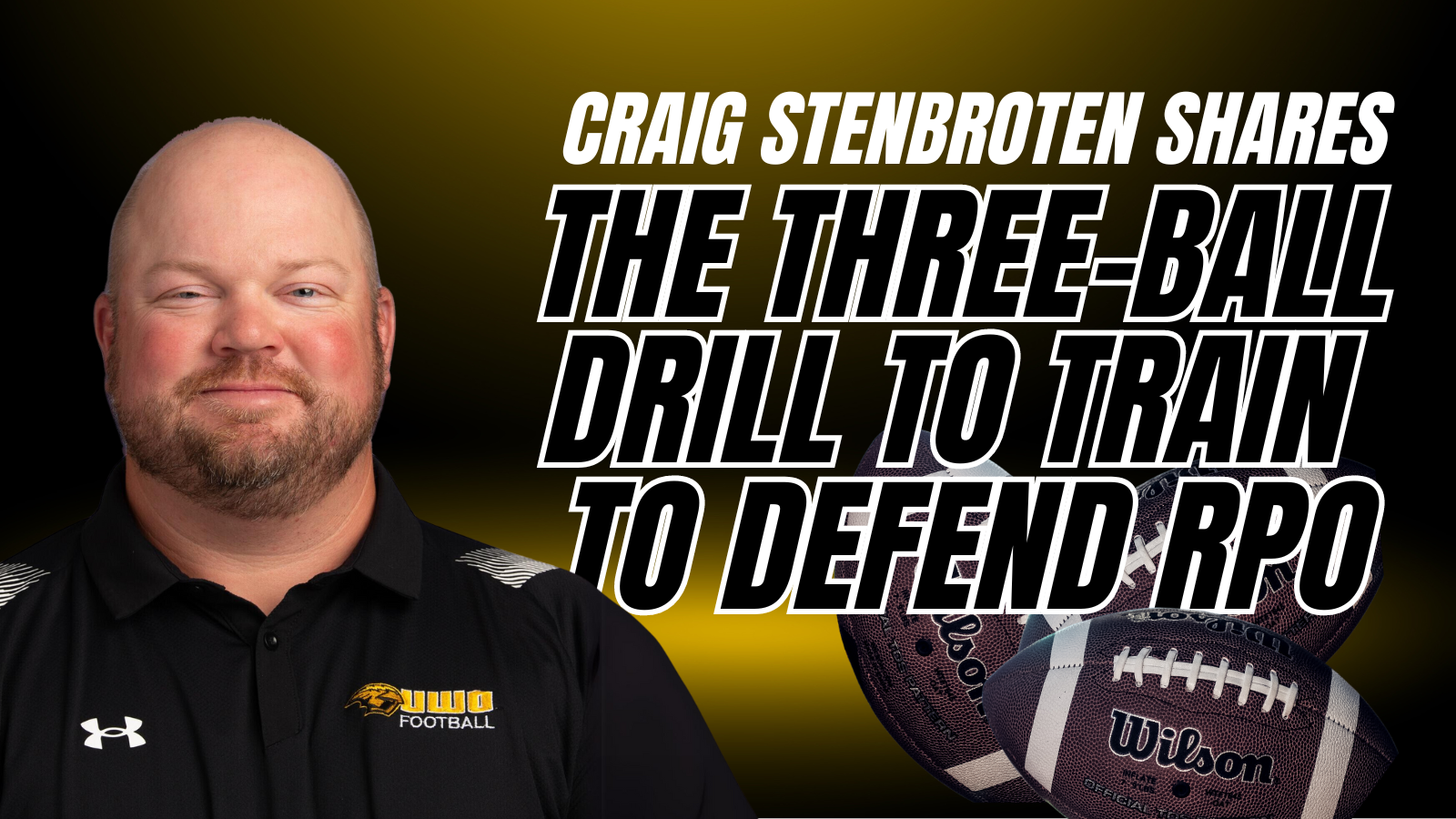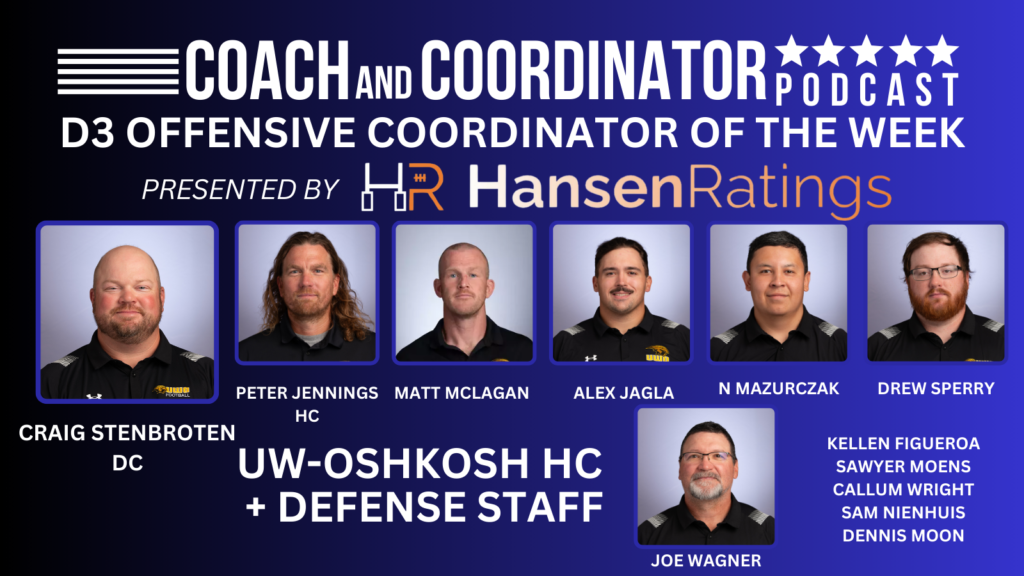
As it has been for the last decade, the Run-Pass Option (RPO) is one of the most challenging offensive schemes for defenses to counter. Teams using RPO continue to be creative in how they stress defenders with dual responsibilities. To combat this, defenses must have precise communication, clear assignments, and above all, discipline. One innovative tool being used to prepare for this is the “Three-Ball Drill,” designed to hone defensive players’ ability to read offensive keys and react instinctively to multiple options.
Craig Stenbroten, Defensive Coordinator at UW Oshkosh, has successfully implemented the Three-Ball Drill to prepare his defense for the challenges of defending the RPO. The drill, though non-traditional, isolates one of the toughest elements of defending the modern RPO—the eye discipline of the conflict defender.
What Is the Three-Ball Drill?
The Three-Ball Drill is a team-oriented drill where 11 defensive players line up against an offensive formation. The offense is represented by three quarterbacks, each serving a different purpose during the drill:
- Quarterback 1: Hands the ball off to a running back, simulating the run play.
- Quarterback 2: Executes an RPO pass, typically targeting the quick-out or slant routes associated with the RPO.
- Quarterback 3: Throws a screen, simulating either the smoke or bubblescreen.
This setup forces defenders to make real-time decisions based on their assignments while tracking their specific keys on the field. Each player must focus on their individual responsibility—whether it’s covering a wide receiver, filling a run gap, or diagnosing a potential screen pass—all while ensuring their eyes are on the right keys.
Stenbroten explains the rationale behind the drill, saying, “We really try to manipulate the player’s eyes based on what coverage you’re playing, kind of what fit you’re in.” He continues, “There’s no more excuses now. You can say, ‘I know your eyes are wrong because you’re going after the wrong thing right here.’”
Why the Three-Ball Drill?
The core purpose of the Three-Ball Drill is to enhance defensive players’ ability to focus on their assignment without getting distracted by the other components of the RPO being executed. The drill sharpens three key skills:
- Eye Discipline: With three separate offensive options developing at once, players must maintain their focus on their specific assignment and not be fooled by misdirection or the actions of other players on the field. For example, a linebacker tasked with plugging a gap can’t be lured out of position by the quarterback’s fake or a wide receiver’s movement.
- Quick Decision-Making: The drill forces players to quickly identify whether they are responsible for the run, a pass, or a screen and react accordingly. As RPO offenses seek to exploit defenders’ hesitation, this rapid reaction skill is critical to ensuring the defense can shut down multiple options.
- Communication and Consistency: Every defensive play call has specific roles for defenders. In an RPO defense, it’s imperative that players understand who is in conflict and who has the run or pass responsibility. The Three-Ball Drill trains players know their role and communicate effectively to adjust when the offense makes its read and decides which option to pursue.
How It Works in Practice
In Stenbroten’s defense, defenders are broken down into various fit players, such as “plug” or “flow” players, each having a defined role based on the coverage or scheme they’re in. For example, an inside linebacker may be a “plug” player responsible for stepping into a gap against a run, while a safety may be the deep coverage man responsible for diagnosing the pass.
During the Three-Ball Drill, defenders practice reading their keys and executing their responsibilities based on the offensive setup. If they misread the play—say, an inside linebacker bites too hard on the run fake and leaves a passing lane open—the mistake becomes apparent and can be corrected in real-time. It allows players to simulate the pressure of an RPO attack and make adjustments before they face the situation in a live game.
“These offensive coordinators now are just getting so good at being able to be multiple and how they run the ball with the RPOs, how much they can stress you out,” Stenbroten remarks. “That consistency is something we try to go back to, maybe when things are not going so great for us.”
Advantages of the Three-Ball Drill
- Controlled Environment for Mistakes: This drill allows coaches to identify where breakdowns in coverage or responsibility occur. When something goes wrong—whether it’s miscommunication or a misread—it’s easier to diagnose the problem in a controlled drill setting. This minimizes the chances of those mistakes being repeated during live games.
- Simulates Game-Like Situations: Though the drill itself may not feel entirely “realistic” as the coach orchestrates three different plays simultaneously, it effectively recreates the mental pressure defenders experience during an RPO. Players are challenged to make rapid decisions just as they would when facing a high-tempo offense on game day.
- Improves Defensive Versatility: The RPO forces defenses to be adaptable. By training with the Three-Ball Drill, defenders are exposed to multiple offensive looks, making them more prepared to face not only the RPO but also other offensive schemes. The repetition of defending different options within one play improves defensive readiness across the board.
Keep Evolving
As RPO offenses continue to evolve and put more pressure on defenses, it’s crucial that defenses develop new methods of preparation. The Three-Ball Drill, used by Craig Stenbroten, offers a unique and highly effective way to train players for the challenges posed by these multiple-read offenses. By focusing on eye discipline, quick decision-making, and consistent execution, the drill prepares defenders for the mental and physical stressors of game day, helping teams stay a step ahead of the RPO threat.
About Craig Stenbroten
The Coach and Coordinator Podcast, in partnership with Hansen Ratings, is excited to name Craig Stenbroten, defensive coordinator at UW-Oshkosh, as the D3 Defensive Coordinator of the Week for Week 1. Stenbroten’s defense delivered a dominant performance, holding a high-powered Wheaton College offense to just 14 points in a hard-fought 21-14 victory.
Notable Stats:
Wheaton averaged 46 points per game in 2023, but Stenbroten’s defense held them to their fewest points since 2021.
All-American RB limited to just 59 rushing yards (99 total rushing yards allowed).
- Opened the game with three consecutive 3-and-outs.
- Key defensive standout, Ben Wellhoefer, contributed 2 tackles, 1 tackle for loss, 1 interception, and 2 pass breakups.
- The longest play allowed by the defense was just 19 yards.
- The longest rush allowed was only 10 yards.
Stenbroten’s defensive assistants are Matt McLagan, Alex Jagla, Nicholas Maczurak, Drew Sperry, Kellen Figueroa, Sawyer Moens, Callum Wright, Sam Nienhuis, and Dennis Moon.
Under Stenbroten’s leadership, the UW-Oshkosh defense stifled a Wheaton offense that hadn’t scored fewer than 35 points in a game since their last matchup with UW-Oshkosh in 2023. This exceptional defensive effort secured the team’s Week 1 victory and earned Stenbroten this week’s Defensive Coordinator of the Week title.



